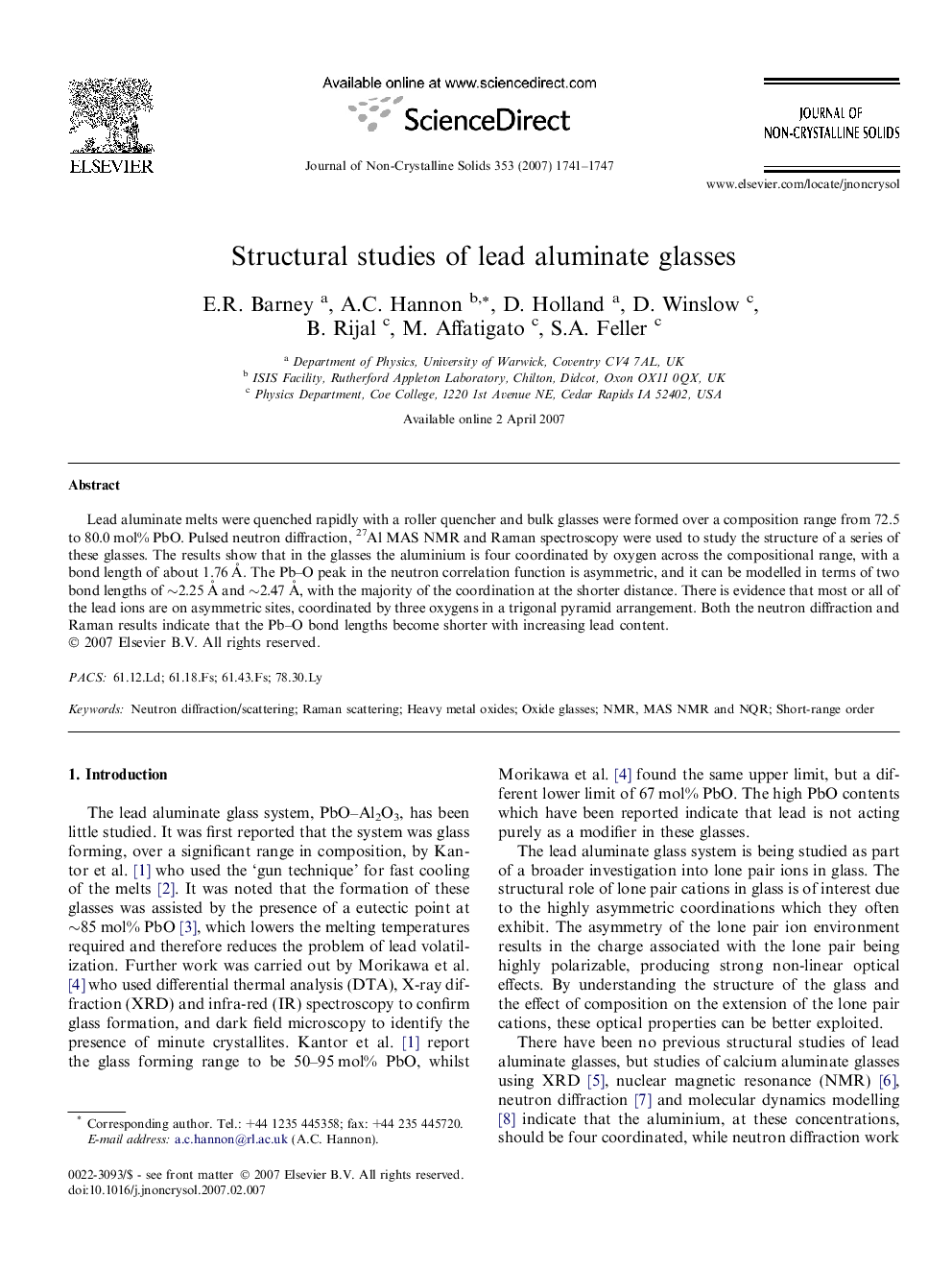| Article ID | Journal | Published Year | Pages | File Type |
|---|---|---|---|---|
| 1485349 | Journal of Non-Crystalline Solids | 2007 | 7 Pages |
Lead aluminate melts were quenched rapidly with a roller quencher and bulk glasses were formed over a composition range from 72.5 to 80.0 mol% PbO. Pulsed neutron diffraction, 27Al MAS NMR and Raman spectroscopy were used to study the structure of a series of these glasses. The results show that in the glasses the aluminium is four coordinated by oxygen across the compositional range, with a bond length of about 1.76 Å. The Pb–O peak in the neutron correlation function is asymmetric, and it can be modelled in terms of two bond lengths of ∼2.25 Å and ∼2.47 Å, with the majority of the coordination at the shorter distance. There is evidence that most or all of the lead ions are on asymmetric sites, coordinated by three oxygens in a trigonal pyramid arrangement. Both the neutron diffraction and Raman results indicate that the Pb–O bond lengths become shorter with increasing lead content.
